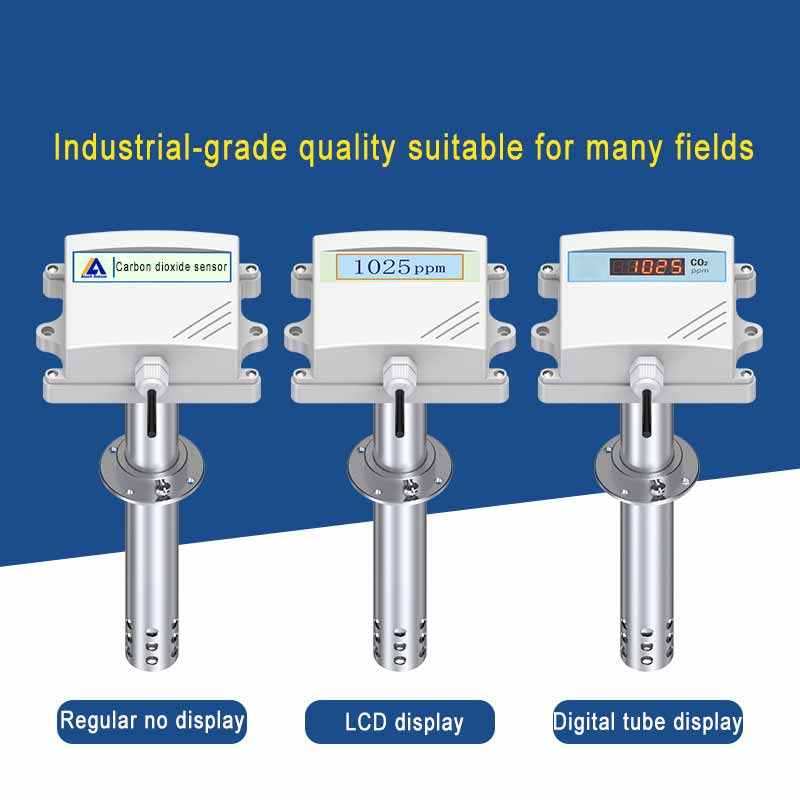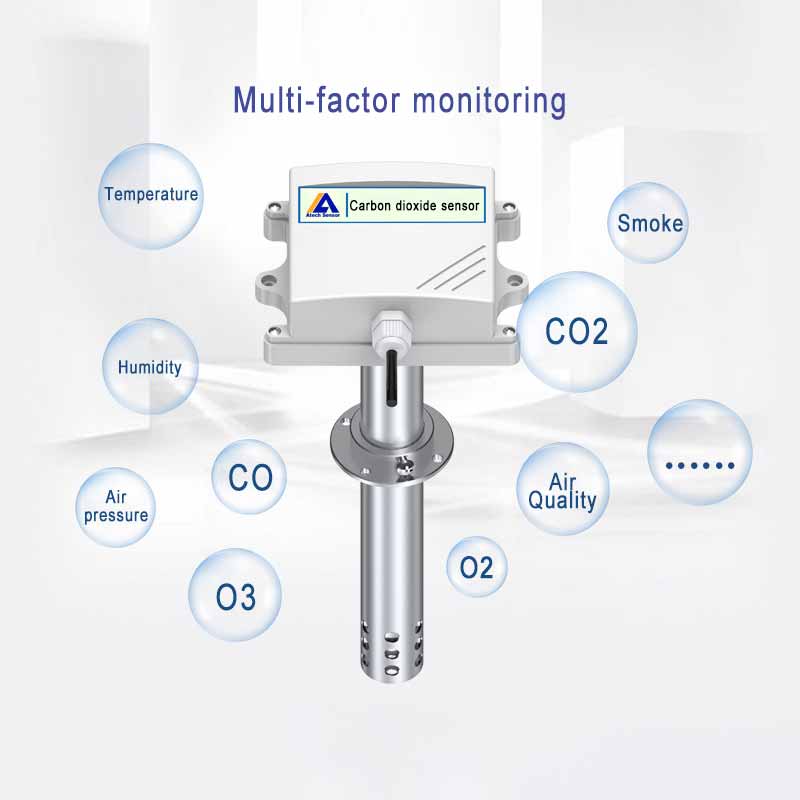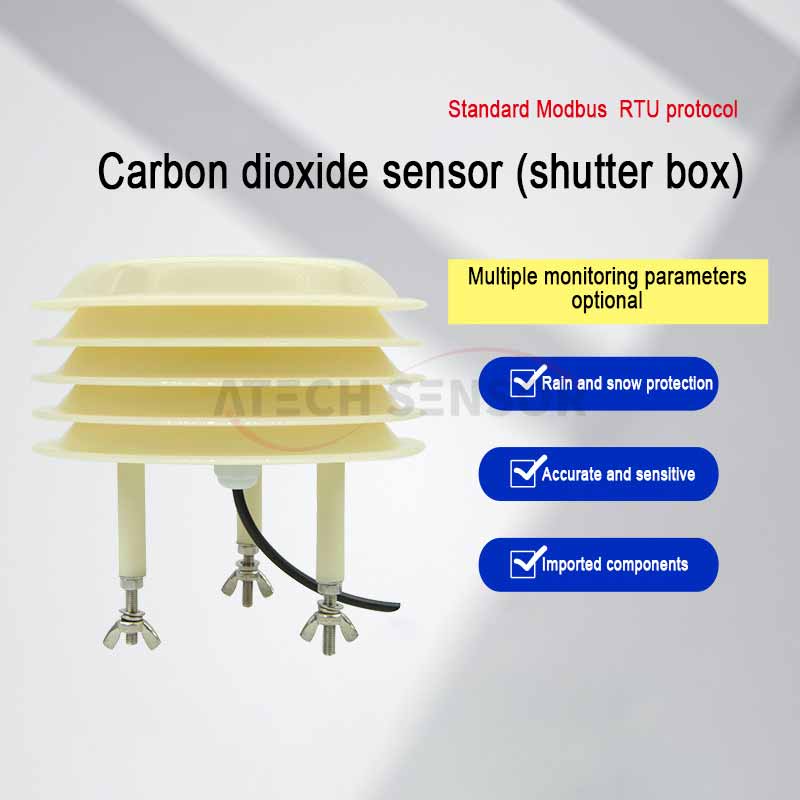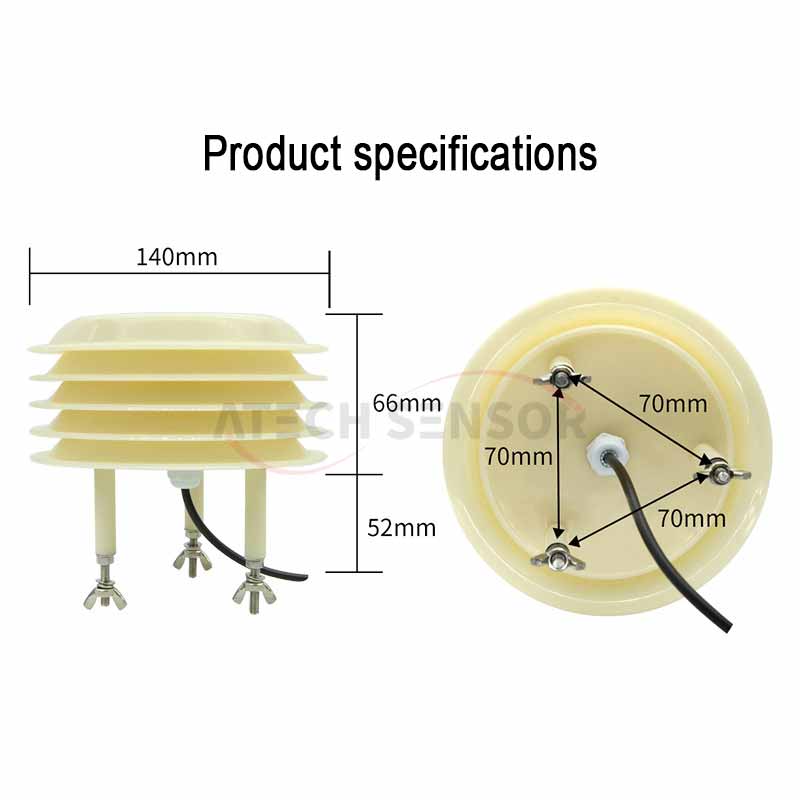Definition of Carbon Dioxide Sensor
A carbon dioxide sensor is a device used to detect the concentration of carbon dioxide (CO2) in the air. It utilizes a specific operating principle to accurately measure the amount of carbon dioxide in the environment, providing critical environmental data for a variety of application scenarios.

CO2 Sensor Working Principle
The operating principle of CO2 sensors is based on the following technologies, the most common of which is non-dispersive infrared (NDIR) technology.
1. Non-dispersive infrared (NDIR) technology
• Advantages: High accuracy, selectivity and stability, widely used in various environmental monitoring and control scenarios.
2. Electrochemical sensors
• Advantages: Lower cost, suitable for portable and low-cost applications.
3. Semiconductor sensors
• Advantages: Fast response time, suitable for rapidly changing environments.
4. Thermal conductivity sensor
• Advantages: Simple structure, suitable for some specific applications.

The Role And Value of Carbon Dioxide Sensors
1. Environmental monitoring
• Air quality assessment: real-time monitoring of carbon dioxide concentration in the environment, to provide data support for air quality assessment to prevent air pollution.
2. Industrial control
• Production process monitoring: Monitor gas concentration during production to ensure the safety and stability of the production environment.
3. Agricultural applications
• Precision agriculture management: Monitor CO2 concentration in farmland to optimize irrigation and fertilization programs.
4. Health Protection
• Indoor air quality: In offices, schools, hospitals and other public places, CO2 sensors can monitor indoor air quality and prevent health problems caused by high CO2 concentration.
5. energy efficiency
• HVAC system: In HVAC systems, ventilation is automatically adjusted according to CO2 concentration to improve energy efficiency and reduce energy consumption.
6. Medical applications
7. transportation
8. scientific research
• Climate change research: monitoring changes in CO2 concentration in the atmosphere, providing data support for the study of global climate change.
The Carbon Dioxide Sensor Application Scenarios
1. CO2 sensor for indoor environment
• Office: Ensure a comfortable and efficient environment for occupants.
• Schools: Maintain a good learning environment and improve students' learning efficiency.
• Hospitals: Maintaining a high quality healthcare environment to safeguard the health of patients.
2. CO2 sensors are used in agriculture
• Agricultural greenhouses: monitor the carbon dioxide concentration inside the greenhouse to provide a suitable gas environment for crop growth.
3. Carbon dioxide sensors are used in industry
• Mines: Ensure the safety of workers and avoid the risk of asphyxiation.
• Underground parking lots: monitor air quality to ensure the safety of vehicles entering and exiting.
4. Carbon dioxide sensors are used in transportation
5. CO2 sensors for smart homes
6. CO2 sensors for environmental research
• Climate change research: field studies and data collection related to atmospheric CO2 levels.

CO2 Sensor Installation Guide
1. Select the carbon dioxide sensor (CO2 sensor) mounting location
• Avoid interference: Avoid installing the sensor where it will be directly exposed to sunlight, wind, rain, or heat.
• Away from sources: Ensure that the sensor is located away from sources that may produce CO2, such as combustion equipment or vents, to avoid erroneous readings.
• Indoor Height: For indoor installations, the sensor should be located at the height of the person's activity area, typically between 1.5 and 2 meters.
2. Prepare tools and materials
• Accessories: Prepare the necessary installation accessories such as screws, brackets, tape or anchor bolts.
3. Install the CO2 sensor
• Hanging type: Hang it at a suitable height using a boom or cable.
4. Connect the power and signal cables
• Signal line: If the sensor supports remote data transmission (e.g. RS485, 4-20mA output), connect the corresponding signal line.
• Check connections: Make sure that all connections are firm and correct, and that the cables have been properly secured to avoid any possible damage.
5. Calibrate the sensor (if required)
• Calibration ensures: that the sensor provides accurate readings.
6. test the sensor
• Signal Check: Check that the correct output signal is present and that the readings are reasonable.
7. Complete the installation
• Protection: If the sensor requires protection (e.g., a shield), install it properly.
8. Records and documentation
• Record information: Record the date the sensor was installed, its location, and any relevant calibration information for future maintenance and calibration.

Summary

